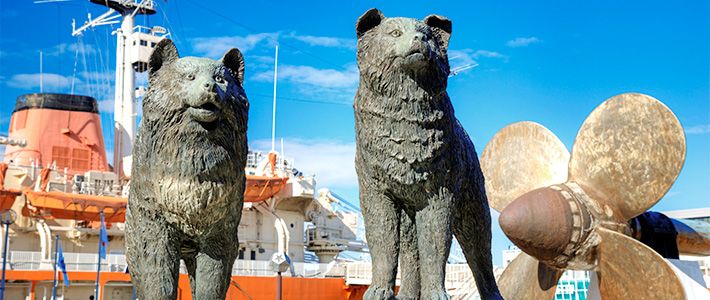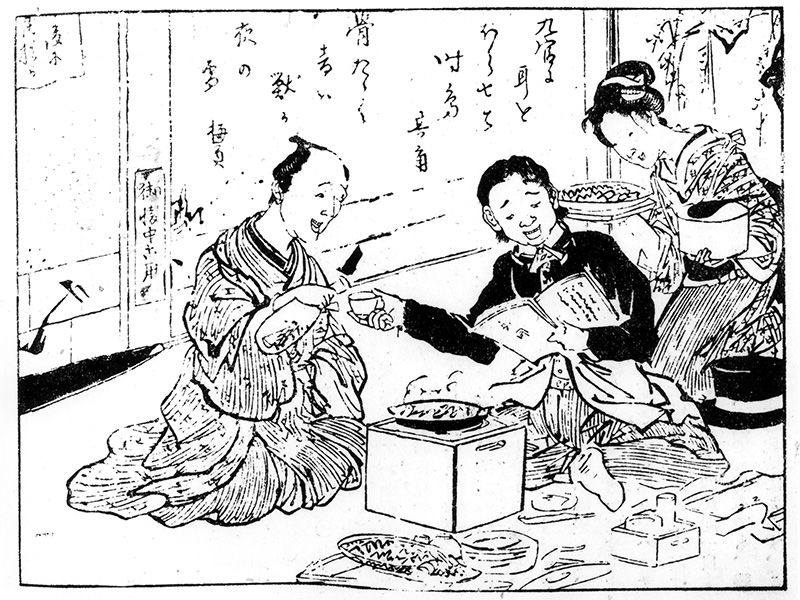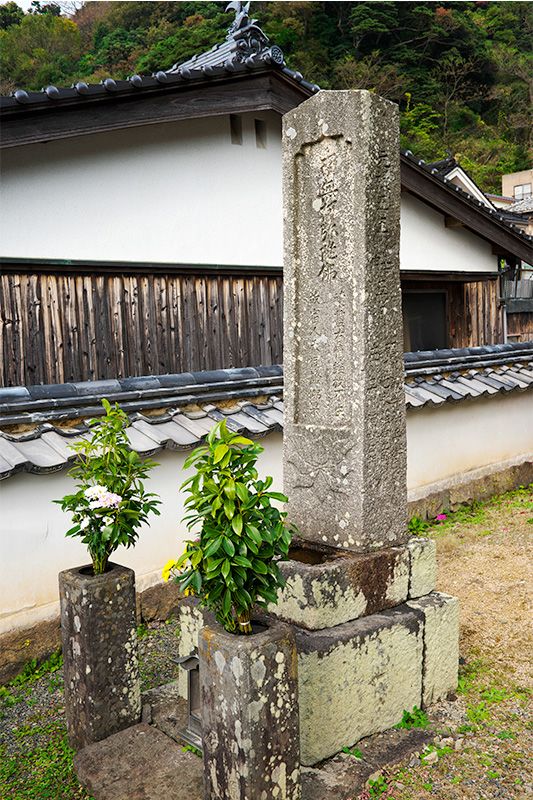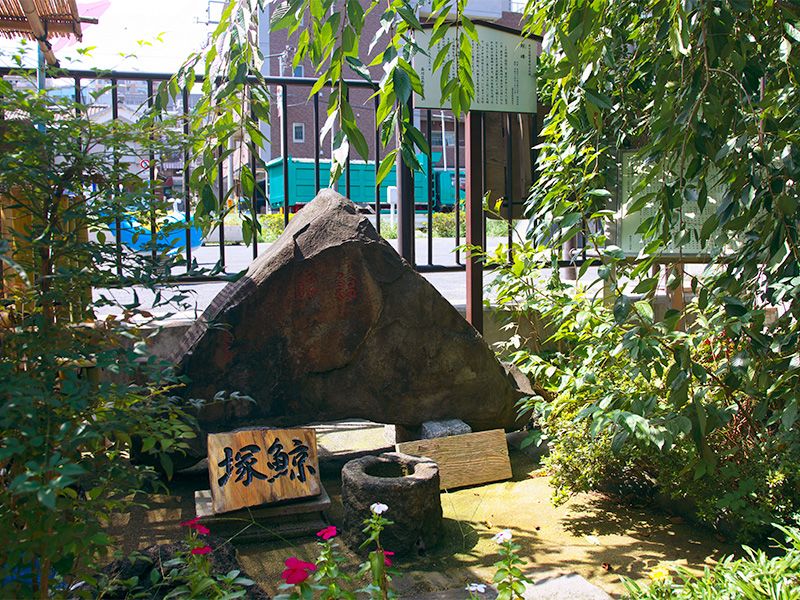
Remarkable Recovery: The Modern History of Japan’s Environment
Human-Animal Ties: Japanese Takes in Both Life and Death
Culture- English
- 日本語
- 简体字
- 繁體字
- Français
- Español
- العربية
- Русский
The Japanese and the Eating of Meat
Emperor Tenmu (r. 673–686) was a devout Buddhist who in 675 banned the consumption of animal meat—including cattle, horses, dogs, chickens, and monkeys—launching a policy that continued in some form for nearly 1,200 years.
By the late Edo period (1603–1868), enforcement of the ban on eating meat had become quite lax. In fact, the last shōgun, Tokugawa Yoshinobu, was so fond of pork he had it specially transported from the Satsuma domain where the best pork was to be had. His taste for the meat was so well known he was given the nickname Ton’ichi-sama, with the ichi (one) coming from his branch of the Tokugawa family, the Hitotsubashi (“One Bridge”) clan, and ton signifying the pig.
The traditional ban on meat was lifted after the Meiji Restoration of 1868. In 1872, Emperor Meiji issued an edict formally rescinding the ban, and himself became an avid eater of meat. He is said to have explained to Ōkubo Toshimichi (1830–78), one of the early Meiji statesmen, that he needed to eat meat to socialize with foreigners rather than for nutrition.
Surprisingly, the edict sparked a violent protest a month later when a small group of 10 ontake gyōja mountain ascetics dressed in white stormed the imperial palace. Four of the group were shot dead by security guards, one was seriously wounded, and the remaining five were arrested.
Advocates for a Meat-Based Diet
In response to a request from the gyūba kaisha, a government-operated meat vendor located in Tsukiji, Fukuzawa Yukichi published an article promoting the eating of meat, titled “Nikujiki no setsu” (A Theory of Meat Eating). In this article, Fukuzawa asserts that traditionally the Japanese ate meat only rarely, and that the nutritional imbalance this produced let many people to illness and weakness. Advocating meat as essential to good health, Fukuzawa made sure to include meat dishes in the cafeteria menu at Keiō Gijuku, the school he founded.
Even after the lifting of the ban on meat, however, many Japanese still firmly believed that beef was unclean, and they would hold their noses in disgust as they passed by gyūnabe-ya shops serving savory meat dishes. The shops flourished nevertheless, and by 1877 there were more than 550 gyūnabe-ya in Tokyo alone.
 A gyūnabe-ya in the early Meiji era. From an edition of Agura nabe (The Beef Eater) by Kanagaki Robun. (From the collection of the Yokohama Archives of History)
A gyūnabe-ya in the early Meiji era. From an edition of Agura nabe (The Beef Eater) by Kanagaki Robun. (From the collection of the Yokohama Archives of History)
Meat became a regular part of the Japanese diet in the wake of the Great Kantō Earthquake of 1923, when numerous countries sent emergency food and supplies to Japan. In particular, the canned corned beef brought to Japan by a US Navy destroyer proved especially popular among the earthquake survivors and provided the final blow to the long-held taboo on meat eating.
Thereafter, canned corned beef was considered a special kind of preserved food. To this day, the Japanese are probably the only people in the world who consume canned corned beef as a regular part of their diet as opposed to a preserved food meant for sailors. (Indeed, the unique shape of the corned beef can is said to have been designed for efficient packing in ships’ holds.)
A Gentle, Compassionate Perception of Life
Traditionally, the Japanese have long had compassion for all living things. This can be seen, for example, in the numerous monuments and Buddhist statuary erected to commemorate animals of all kinds with special significance for humans. At a time when pesticides were still unknown, farmers built mushizuka “insect mounds” to commemorate the insects they were compelled to drive out of their fields to protect their crops. Rituals of supplication were an integral part of the mushi-oi drives to get rid of harmful insects, a regular practice in nearly all farming villages throughout Japan. While insects were a bother to the farmers, they had life, and as such deserved to be memorialized.
Another common sight in Japan are the stone pillars and Buddhist statuary erected to commemorate animals that have been of service to humans, such as horses and dogs. There are, as well, memorials dedicated to animals slaughtered for human consumption, including pigs, chickens, wild boars, birds, fish, and deer. Dog and cat skin were used for a long time in the construction of the shamisen, a traditional plucked instrument, and there are monuments dedicated to the animals sacrificed for this. In the town of Nasu in Tochigi Prefecture, there is an okera kuyōtō, a monument dedicated specifically to the insects captured and fed alive to the shōgun’s falcons.
Whale Eulogies
 A monument dedicated to whales on the island of Ōmijima, Nagato, Yamaguchi Prefecture. (© Aflo)
A monument dedicated to whales on the island of Ōmijima, Nagato, Yamaguchi Prefecture. (© Aflo)
A unique Japanese custom has been the erecting of whale graves, known as kujira-baka, on the grounds of local temples. This was a common practice of fishing villages that depended for their livelihood on whaling. On a recent trip tracing the steps of the poet Kaneko Misuzu, a native of a fishing village in Yamaguchi Prefecture, I visited the Nagato Whale Museum in the city of Nagato, and was especially moved by the whale grave located on the grounds of the nearby Buddhist temple Kōganji.
The whale grave is said to have originated as a symbol of the regret and compassion felt by Japanese whalers for the young whale calves and whale fetuses that were collateral victims of the capture and killing of mother whales. The ends of more than 70 whales are said to be commemorated by the whale grave in Nagato. People continue to visit the grave and offer incense today, although the era of commercial whaling is long past in most of the world.
In addition to the whale grave, Kōganji has a collection of whale mortuary tablets and death records listing the genders, dates and locations of capture, and posthumous Buddhist names of 242 whales, along with the names of the whaling teams that took their lives. These creatures are enshrined in the same way as their human counterparts.
Senzaki, now a part of the city of Nagato, is where Kaneko Misuzu (1903–30) was born and lived until her early death. At the time, Senzaki was a fishing village engaged in coastal whaling, and some of Kaneko’s poems are about the whales, such as “Kujira hōe” (The Whale’s Memorial Service). Kaneko captures in her poem the reverence and appreciation that was felt for the great animal’s sacrifice.
At the end of spring, the whale’s memorial service.
When flying fish are caught in the sea,
The tolling bell at the seaside temple
Rings across the water’s surface.
As the village fishermen don their finest haori coats
And rush to the temple on the shore,
A single whale calf in the offing
Hears that temple bell
And cries out to its lost father and mother.
“How I miss you, how I miss you!”
How far does the ringing of that bell
Echo out across the sea?
 Monuments dedicated to whales are found throughout Japan. This monument is located at the Kagata Shrine in Shinagawa, Tokyo. (© Aflo)
Monuments dedicated to whales are found throughout Japan. This monument is located at the Kagata Shrine in Shinagawa, Tokyo. (© Aflo)
Humans as Elements of Nature
The late Nakamura Teiri, professor emeritus of Risshō University, noted that while there were 67 episodes about humans transforming into animals in Grimm’s Fairy Tales, there are only 6 that describe animals turning into humans. In contrast, the collection Nihon mukashi banashi (Old Tales of Japan) has 42 stories about humans turning into animals and 92 of animals turning into humans.
Magic is essential to the stories of transformation in the Grimm’s Fairy Tales, but not in the Nihon mukashi banashi. Nakamura asserts that this demonstrates a close affinity between humans and animals in Japanese folklore that is not found in the West, where they are clearly differentiated.
In Japan, tanuki (raccoon dogs) assume the form of humans, the legendary human hero Yamato Takeru is resurrected as a swan, and in the folktale “Tsuru no ongaeshi” (The Grateful Crane), a crane takes the form of a woman to thank its human benefactor. There is a fluidity in the transitions between animal and human, a sense of equality in which neither asserts superiority over the other. Perhaps this is a manifestation of a Japanese sense of oneness, identification, and integration with nature.
The Huskies at the Bottom of the World
Back in the 1950s there was a major incident that helped to revive awareness of the strong Japanese affinity for animals. In 1956, Japan’s first team of researchers set off for the Antarctic on the polar research set off for the Antarctic vessel Sōya, taking with them 22 Sakhalin huskies, including two named Tarō and Jirō. The researchers were supposed to winter at the Antarctic Shōwa Base until the second team arrived, but when bad weather made that impossible they were forced to depart, leaving behind 15 of the dogs.
In January 1959, the third research team’s helicopter spotted two dogs alive at the old Shōwa Base. One of the men on that expedition told me later that he was afraid to approach the creatures at first because he assumed they must have gone wild by then. It was later ascertained that the two dogs were Tarō and Jirō, and that they were the only survivors from the canine team that had been abandoned. This was big news in Japan, where celebrations broke out everywhere. Memorial stones and statues commemorating the dogs were erected throughout the country, and a song was even written in their honor.
In 1983, more than 12 million Japanese flocked to see the film Nankyoku monogatari (Antarctica) featuring Tarō and Jirō, giving it the top box office take of the year. A remake of the popular film was released in the United States in 2006 as Eight Below.
The book Inutachi no Nankyoku (The Dogs of the Antarctic) was written by Kikuchi Tōru, a member of the original Antarctic expedition. He recalls how the Sōya was inundated with telegrams protesting the cruel decision to abandon the dogs. “Don’t kill the expedition members who cannot speak for themselves,” they said. “At all costs you must bring them home.” “How dare you forget what you owe those dogs? If you abandon them you should not come home yourselves.”
There were even people who insisted it would have been kinder to kill the dogs than to abandon them. This was a view particularly heard from people in Western countries and Japanese who had experience living abroad. Apparently, the expedition had been planning to euthanize the dogs, but in the end there was no time to carry out the plan.
Most Japanese, however, object strongly to the killing of animals in this way. This has led in some places to the disruption of delicate indigenous ecosystems as abandoned rabbits, goats, and cats proliferate at alarming rates on outlying islands in Okinawa and the Ogasawara Islands. Rather than kill the intruders, many people still call for their capture and taming.
In contrast, in other countries allowing an animal to suffer is frequently considered a worse sin than killing it. Killing the dogs, many Westerners would argue, would have been more merciful than abandoning them to starvation. Still, I remember my instinctive revulsion when I witnessed the merciless killing of feral donkeys that had infiltrated the Galápagos Islands.
Animal Welfare and Slaughter
The United Kingdom has had a series of laws against animal cruelty in place since 1822, and Germany continues to implement animal-protection laws enacted in 1933. Japan, for its part, passed a law on the welfare and management of animals only in 1973.
It would appear that Japan lags behind the West in enacting legislation to protect animals. Certainly, Japan has not had the same kind of legal instruments in place dictating standards for animal facilities, spelling out rules for the management of pets, or allowing pets to accompany their owners on public transportation. Still, we are catching up very quickly.
For many years, Japan has been criticized for the large numbers of dogs and cats brought into public health centers to be killed. According to the Environment Ministry, however, there has been a drastic decline in the number of animals killed, from more than 1.2 million in 1974 to 83,000 in 2015. The percentage of dogs and cats in facilities adopted by new owners has also soared over the same period from only 2% to 39%. Japan is in this way moving downward in the global rankings of annual pet euthanizations, which range from zero in Germany to around 7,000 in Britain and up to roughly 2 million in the United States.
Japan is currently experiencing an unprecedented boom in pets, due in part to the declining birthrate and aging population—childless adults are increasingly opting for animal companionship, as are elderly citizens looking for friendship after their children fly the nest or their partners pass away. Some also point to the growing number of Japanese who feel alone and isolated. More than half of Japanese pet owners say their companions offer them solace and comfort, and that they perceive them more as members of the family and partners.
This has led to new problems as both pets and their owners age, though. Who is to take care of them? In 2016, the law on animal welfare was revised to include a nonbinding clause requiring pet owners to provide lifetime care for their animals. The country has seen the launch of homes for elderly dogs, an indication of the way that society is seeking to grapple with these new issues. At the same time, though, an increasing number of aging owners are choosing to abandon their pets. Developments in our society are certain to continue giving rise to new debates on the relationship between humans and animals.
(Originally published in Japanese on June 20, 2017. Banner photo: Bronze statues of Tarō and Jirō in front of the Antarctic research vessel Fuji, permanently docked at the Nagoya Port. © Aflo.)